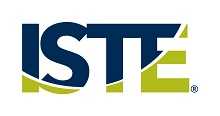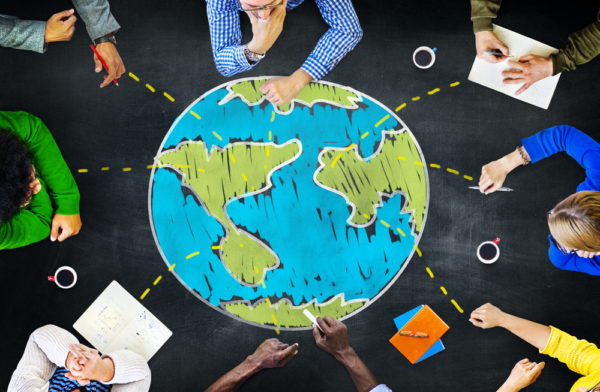Building collaboration skills today means building global collaboration skills. Educators have their work cut out for them
 Ed note: Innovation in Action is a monthly column from the International Society of Technology in Education focused on exemplary practices in education.
Ed note: Innovation in Action is a monthly column from the International Society of Technology in Education focused on exemplary practices in education.
It’s one thing for today’s students to connect with the world and to appreciate the diversity and significance of potential interactions through everyday, real-time interaction. It is a whole different challenge to be able to collaborate with learning partners across town — or around the world.
The latter, in truth, is what all educators and learners should be aspiring toward, but the reality is you cannot run before you can walk. Unless educators understand and experience the power of using digital technologies for online collaboration in a local context first, it is likely that jumping head-first into global contexts — with its myriad challenges — will not be successful.
Emerging approaches to digital scholarship question what knowledge is, how it is gained, and how it is shared. Digital technology provides for differentiation, accountability, and visibility in the learning process. For collaborative learning, the internet provides the platform for engaged learning, deeper understanding, and some exciting outcomes.
What does that mean for today’s student? In practical terms, it means collaboration can take on a whole new persona. Collaboration as an inquiry-based, higher-order-thinking and problem-solving skill is now just as possible virtually as it is face to face, and online collaboration, by its very nature, implies synchronous as well as asynchronous working modes. In other words, if logistics are accounted for, students can Skype with peers in Hong Kong or trade private messages to them with equal ease. As educators, we need to understand this paradigm shift and know how to bring digital collaboration into the learning environment.
Attributes of online global collaboration
Learning does not happen in isolation. Learning is social, and individual creation can, or more pointedly should, become collaborative creation in many instances. Students develop understanding about the world through working together with others, by sharing ideas and outcomes. As global educators, we need to consider how to bring online collaboration into our learning environment. We also need to understand how to go beyond synchronous to also support asynchronous online collaborations. This involves embracing new pedagogies and new pedagogical capacity, namely a teacher’s repertoire of teaching strategies and partnerships for learning. We can always learn about something; however, the goal for online (leading to global) collaboration is to learn with others, and to build understanding together.
| Definition: Online global collaboration broadly refers to geographically dispersed educators, classrooms, and schools that use online learning environments and digital technologies to learn with others beyond their immediate environment in order to support curricular objectives, intercultural understandings, critical thinking, personal and social capabilities, and ICT capabilities. |
Next page: What skills should a global educator have?
True online global collaboration takes place when students with different cultures and points of view gather information and co-create artifacts together, building knowledge and sharing with the world. Schools that foster this type of learning must have:
- Engaged, connected, and digitally fluent educators who know how to communicate using Web 2.0 and other online tools
- Carefully planned and designed global collaborations that are implemented and managed with a view to effectively join classrooms together to enhance learning and support co-created outcomes
- Common assessment objectives between global partners
- High expectations and requirements for connectivity, contribution and collaboration on educators and students
- Community partners who provide new knowledge, skills and resources for the online learning community
- Multimedia savvy to pitch ideas to solve real-world problems
- Educator or student initiated themes and student-managed learning
- Student autonomy in learning, and an ability to initiate online collaborations
- Peer-to-peer learning that transcends cooperation and supports new collaborative digital modes
- Online publishing and sharing modes that make use of Web 2.0 platforms and social media.
Educators who participate in online global collaboration need professional support in understanding how to build engaging and successful relationships with others at a distance so that deeper global learning is realized. Online global collaboration features a number of typical or usual behaviors and actions, called norms, that are found in both synchronous and asynchronous modes. As a global educator and education leader, following these eight norms will likely ensure successful collaborations.
The eight norms of online global collaboration
- Be Prepared (connect, communicate)
- Have a Purpose
- Be able to Paraphrase
- Be able to Perceive
- Make sure you Participate
- Be Positive
- Be Productive
- Realize the Potential
Be productive
Productivity is a critically important norm. What did you actually produce during this collaboration? Where is the evidence? Consider as part of the global collaboration design what the outcomes will be and work toward this. Consider also making these outcomes visible to others, and if possible making the process visible as well.
As part of the productivity, develop an understanding of what co-creations are possible between learners and how this could be implemented. Then encourage collaborators to work toward this. It could be a co-created statement or document that all students have contributed to, or perhaps a perhaps a piece of multimedia that students contributed to in different ways. Or maybe it’s a co-hosted online summit, or something quite new.
This norm homes in on collaboration and shares essential practices while learning globally online. A well-designed online global collaboration is about flattened learning and creating something to share and/or co-creating artifacts between students and classrooms.
Productivity means you:
- Collaborate and share information and ideas
- Create outcomes to share and encourage responses
- Make outcomes visible to the outside world
- Encourage students to compare, contrast, reflect
- Aim to build knowledge together and co-create artifacts
When developing projects for global collaboration, consider these guiding questions:
- How will participants collaborate and share information?
- Both synchronous (in real time such as Skype) and asynchronous (such as a Wiki) must be considered depending on time zone factors
- What artifacts will be created?
- Collaborative creation includes Google Docs, Wikis, blogs, Edmodo discussions, Padlets
- Will artifacts be co-created? How?
- Co-creation tools and objectives include videos (eg. Animoto), e-books, and Google Presentations
- How will feedback and responses be gathered based on the student work?
- Live Student Summits in a virtual classroom, feedback from readers and viewers via comments to blogs and docs and YouTube comments
- Are outcomes going to be visible to the outside world? How?
- Find ways to “open” the learning so that collaborative outcomes are shared beyond the participants
- How will students interact in order to compare, contrast and reflect?
- Celebration and reflection are key actions during and at the end of a global collaboration
- TC- What student choice and agency actually looks like - November 15, 2016
- What student choice and agency actually looks like - November 14, 2016
- App of the Week: Science sensor meets your smartphone - November 14, 2016


